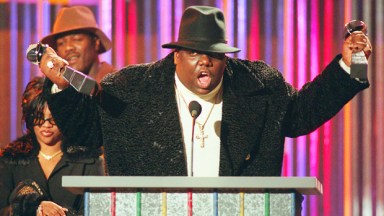
Brooklyn’s in the house – forever. One of the city’s most beloved sons is the late Notorious B.I.G. aka Biggie Smalls. Sadly killed in the late ‘90s, Biggie Smalls was one of the largest and brightest stars of his generation, and his short but powerful life continues to influence hip-hop to this very day.
On May 21, 2022, Biggie would have turned 50 years old, a milestone that many of his fans, friends, and family wish he would have lived to see. Now, more than two decades after he was killed, take a look back at Biggie’s life, his tragic death, and how his music continues to resonate throughout the halls of hip hop.
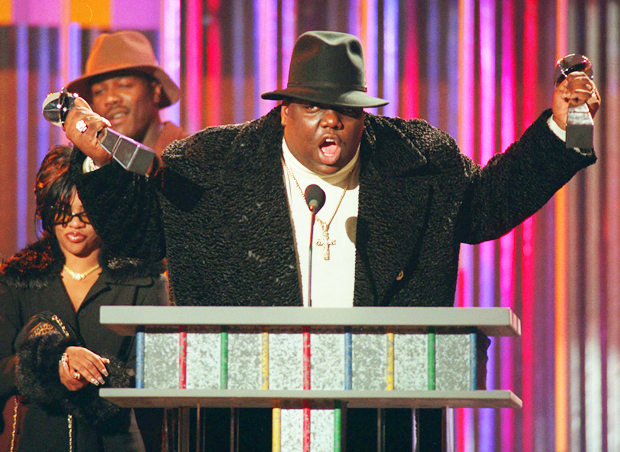
Biggie In Life
Biggie Smalls, the Notorious B.I.G., was born Christopher George Latore Wallace, on May 21, 1972, at St. Mary’s Hospital in Brooklyn, New York. His father abandoned the family when Biggie was only two, and his mother, Voletta Wallace, worked two jobs to send her son to a private school. Biggie transferred to George Westinghouse Career and Technical Education High School, a school that boasts Busta Rhymes, DMX, and Jay-Z as alumni. However, Biggie would drop out in 1989 at age 17.
Biggie told The New York Times in 1994, sharing that he began selling drugs at age 12. “My customers were ringing my bell, and they would come up on the steps and smoke right here. They knew where I lived; they knew my moms.”
After getting out of jail, Biggie began to dabble in music. “Well, me and my DJ, 50 Grand, used to make tapes in the basement when we’d drink and get high. I used to just bug on the mike, and he would play instrumental beats and tape them,” he told Interview magazine in 1994. The demo tapes were never intended to leave the Brooklyn neighborhood, but one of them found its way to The Source magazine. Biggie was profiled for their “Unsigned Hype” column and invited to record an album with other independent artists.
“Then the guy that organized that, Matty C, saw [Sean “Diddy” Combs] and asked him if he had some new n—-s that had some hard sh-t. And Matt let him hear my sh-t. It all happened from there,” said Biggie. Diddy – going under his “Puffy”/“Puff Daddy” moniker – was with the A&R department of Uptown Records, and shared the tape with his boss, Andrew Harrell. “He had a voice that just sounded like it was heavy, funky and rhythmic,” Harrell recalled to The New York Times. “And it had a lot of personality — like a light on his feet kind of big brother.”
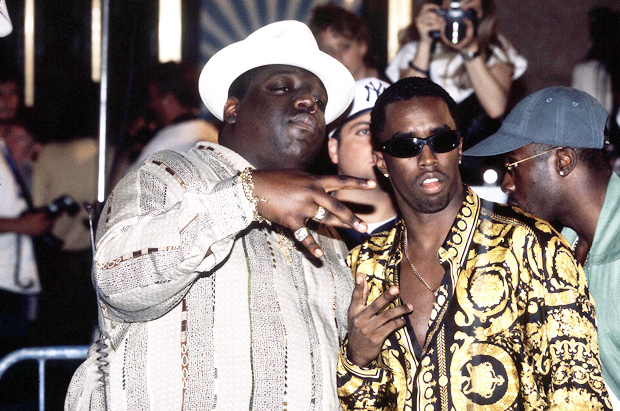
Diddy and Uptown Records had a falling out and in 1993, Combs launched Bad Boy Records, an imprint of Epic/Sony. Biggie – having changed his name to The Notorious B.I.G. following a lawsuit by Calvin Lockhart, who played the character “Biggie Smalls” in 1975’s Let’s Do It Again, the inspiration for Biggie’s moniker – joined Combs on the label. In 1994, The Notorious B.I.G. released Ready To Die, his debut album. It peaked at No. 15 on the Billboard 2000, and spawned the Top 10 hit, “Big Poppa.”
Over the next three years, he would become one of the biggest stars in hip-hop, helping pioneer the ‘90s East Coast scene. Biggie helped launched the careers of rappers like Lil Kim and Lil Cease with his Junior M.A.F.I.A. group, and appeared on songs by Michael Jackson (“This Time Around”), 112 (“Only You”), and 2Pac, aka Tupac Shakur.
Biggie released “Hypnotize” on March 4, 1997. It was the first single off his sophomore album, Life After Death, which also included “Mo Money Mo Problems.”
While alive, Biggie was romantically linked to many women, including rapper/singer Charli Baltimore, Lil’ Kim, and Faith Evans. Faith and Biggie married on Aug. 4, 1994, after meeting just the week before.
“I married her after knowing her eight days and I was happy,” Biggie told Vibe in 1997. “That was my baby. At the same time, with us being so spontaneous, we did it backwards. Maybe she won’t admit it, but I will. We should have got to know each other and then got married.
“The relationship kind of dissolved, but we’re still going to be friends. I love her. We have a baby together, and we’re always gonna love our kids,” added Biggie. Faith and Biggie’s marriage suffered due to his love affairs with the aforementioned Lil Kim and Charli.
During Biggie’s life, he fathered two children: T’yanna Wallace, who he had with a high school sweetheart, Jan Jackson; and C.J. Wallace, Biggie’s son with Faith.
Biggie’s Shocking Death
Biggie Smalls was murdered in the early hours of March 9, 1997. The East Coast rapper had traveled to Los Angeles to promote his upcoming album, Life After Death, and film a music video for “Hypnotize.” After attending a party at the Petersen Automotive Museum in L.A., Biggie got into the front passenger seat of a green Suburban, driven by Gregory “G-Money” Young, according to Rolling Stone. Junior M.A.F.I.A. rapper James “Lil’ Caesar” Lloyd, and B.I.G.’s best friend, Damien “D-Rock” Butler, rode in the back.
The car had just gotten about 50 yards away when it stopped at a red light. A dark-colored Impala pulled up alongside the Suburban and the driver opened fire at the car. Biggie was shot four times in the drive-by shooting. He was rushed to Cedars-Sinai Medical Center, but the doctors’ efforts were in vain. He was pronounced dead at just 24 years old.
Who Died First: Biggie or Tupac?
Biggie’s death is often considered retaliation for the killing of his friend-turned-rap rival, Tupac Shakur. Tupac was murdered on September 13, 1996, six months before Biggie was shot dead.
Tupac was friends with Biggie and collaborated with him on a handful of songs, including 1995’s “Runnin’ from tha Police.” Tupac was in Manhattan on Nov. 30, 1994, working on his third album, Me Against the World, when two armed men shot and robbed the rapper. Tupac blamed the attack on Sean Combs and Biggie, prompting the escalation of the East Coast/West Coast rivalry.
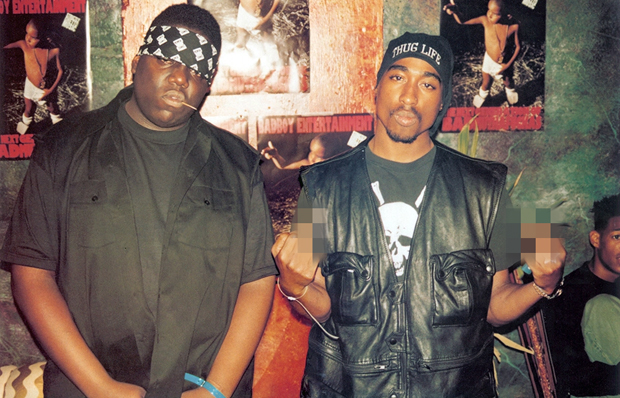
On Sept. 7, 1996, Tupac was in Las Vegas for the Mike Tyson-Bruce Seldon fight at the MGM Grand arena. After the fight was over, Tupac and her entourage were engaged in a violent scuffle with a man later identified as a member of the Los Angeles-based Crips gang, per History. Hours after the violent altercation in the MGM Grand hotel lobby, Tupac was riding in the passenger seat of a car driven by Marian “Suge” Knight. A Cadillac pulled up alongside them at a stoplight, and an unidentified rider opened fire. Tupac was struck four times.
Suge drove the vehicle to the University Medical Center, where Tupac was put into a medically-induced coma. Six days after he was shot, and despite all the efforts from medical professionals, Tupac died from his wounds.
Both murders remain unsolved as of 2022.
Biggie’s Legacy
Life After Death arrived on March 25, 1997, two weeks after Biggie’s death. The album features appearances by The LOX, Jay-Z, Mase, Puff Daddy, Bone Thugs-n-Harmony, Lil’ Kim, and more. On May 27, 1997, two months after Biggie’s death, Puff Daddy released “I’ll Be Missing You,” a song featuring 112 and Faith Evans.
“I’ll Be Missing You” sampled The Police’s “Every Breath You Take,” and while it didn’t win a ton of critical acclaim, it topped Billboard’s Hot 100 chart and has since been certified triple-platinum.
Biggie also released three posthumous projects: Born Again (1999), Duets: The Final Chapter (2005), and The King & I, a 2017 album featuring his wife, Faith Evans.
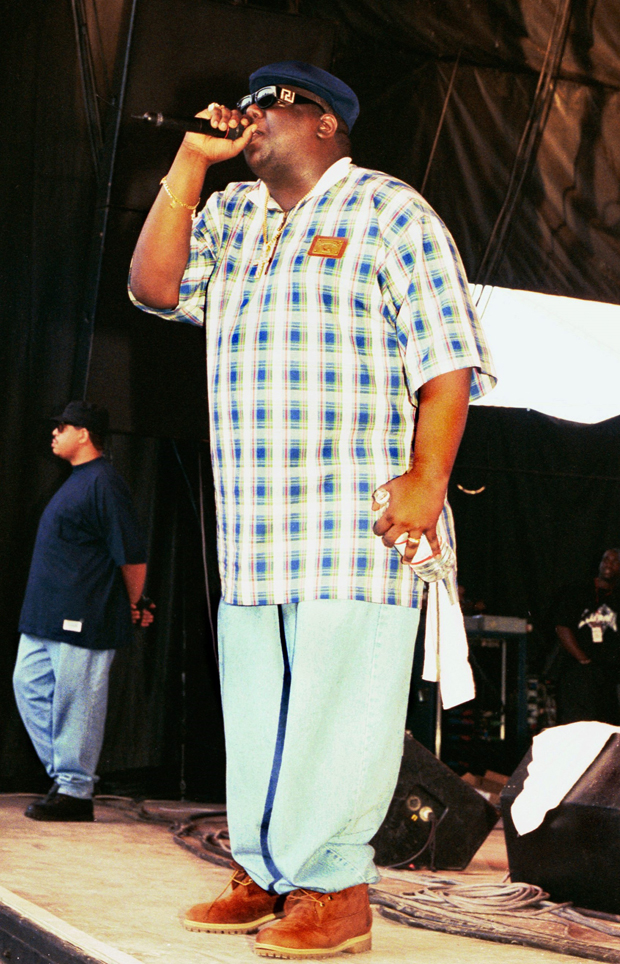
Biggie’s bloodline continues on, helping to carry his legacy into the new millennium. His son, C.J. Wallace, portrayed his father in the 2009 film, Notorious, and has continued his acting career with roles in Monsters and Men, Kicks, and the Scream: Resurrection television series. His daughter is a fashion designer and CEO of Notoriouss Clothing.
Decades after his untimely death, Biggie continues to resonate within the hip-hop world. His flow, autobiographical lyrics, and pure charisma continue to inspire countless other rappers and artists. “[His music] is still just as impactful, as if he were this new, dope rapper from Brooklyn, now,” Faith told CNN in 2017. “Something about his wordplay, his confidence, he was pretty witty and he was intelligent. It’s absolutely timeless.”

![NYC mayor Eric Adams honors the Christopher "Notorious B.I.G." Wallace for his 50th birthday on May 19, 2022 at NY City Hall Rotunda in New York City, USA.
"Christopher George Latore Wallace (May 21, 1972 - March 9, 1997), better known by his stage names the Notorious B.I.G., Biggie Smalls, or simply Biggie,[3] was an American rapper and songwriter. Rooted in the New York rap scene and gangsta rap traditions, he is widely considered one of the greatest rappers of all time. Wallace became known for his distinctive laid-back lyrical delivery, offsetting the lyrics' often grim content. His music was often semi-autobiographical, telling of hardship and criminality, but also of debauchery and celebration" -Wikipedia
NYC Mayor Eric Adams Honors Christopher "Notorious B.I.G." Wallace, New York, United States - 19 May 2022](https://develop.hollywoodlife.com/wp-content/uploads/2022/03/biggie-smalls-notorious-BIG-2.jpg?fit=440%2C294)
